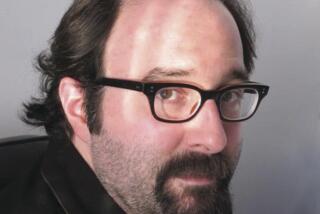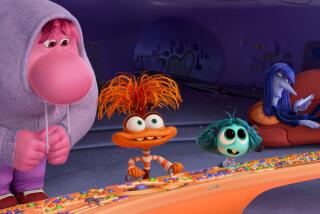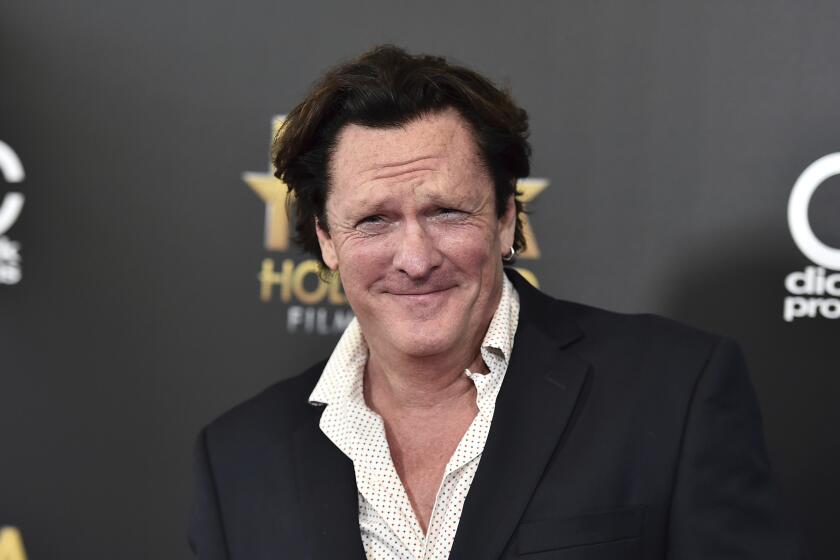Commentary: Hollywood’s hedgehog mentality threatens its survival
To understand what’s wrong with Hollywood today, you have to go back to the British philosopher and historian Sir Isaiah Berlin and his concept of the hedgehog and the fox.
Riffing off a fragment attributed to the ancient Greek poet Archilochus, Berlin devised the notion of categorizing thinkers as either hedgehogs or foxes. The fox, or so this intellectual game went, is a fluid animal that knows many things, while the stolid hedgehog knows only one big thing.
These concepts were mutable, there could be shifts from one to the other, and it seems to me that one of those shifts is the reason why classic Hollywood as we’ve known it is gone and not coming back. It may not be officially dead quite yet, but people are getting ready to stick the fork in, make no mistake about it.
Simply put, Hollywood has traditionally been celebrated as the fox, entertaining everybody by making movies for a wide variety of appetites and audiences. Just how exceptional that range could be is evident by looking at the output for 1939, widely considered to be the studio system’s greatest year.
Among the films released in 1939 alone were “Gunga Din,” “Stage Coach,” “Love Affair,” “Wuthering Heights,” “Dark Victory,” “Young Mr. Lincoln,” “Beau Geste,” “Goodbye Mr. Chips,” “The Wizard of Oz,” “The Women,” “Golden Boy,” “Mr. Smith Goes to Washington,” “Ninotchka,” “Destry Rides Again” and, of course, “Gone With the Wind.” Comedies, dramas, westerns, fantasies, period pieces, inspirational tales, romances. And that’s just scratching the surface.
Today’s Hollywood, by contrast, has transformed itself into the hedgehog. The one big thing it knows how to do is make sequels and superhero movies and sequels to superhero movies, all aimed at a young adult crowd with no end in sight. The race to secure prime spots has become so intense that studios have claimed release dates for as-yet-untitled superhero movies through 2020, which at this point feels a bit like rearranging deck chairs on the Titanic.
This look at Hollywood’s situation, this act of sitting shiva (to borrow a term from the Jewish laws of mourning) for the way it used to be is not something that hasn’t been done before, even by me, but I’ve decided to revisit the situation for several reasons.
First, as I speak and answer questions from moviegoers in Los Angeles and nationwide, it’s a subject that keeps coming up. Like survivors of a disaster who repeatedly walk in disbelief through the ruins of what used to be their home, adults just can’t believe what it’s all come to. Where, they inevitably ask, are the big studio pictures for me?
Even more poignantly, I find this to be true of people inside the industry, people who understand the causes and remain shocked and disturbed at the way things have gone. (Which is likely one reason why the Oscar for best picture often goes to smaller, more serious films and not the latest “Transformers.”)
A few weeks ago I ran into a member of the motion picture academy’s Board of Governors, the people who oversee the organization that gives out the Oscars, and the talk inevitably turned to this situation. “We’re supposed to be dedicated to the advancement of the art and science of motion pictures,” the board member told me. “But where is the art these days?”
One of the side effects of Hollywood’s hedgehog mentality is that it has the potential of leading to situations like this summer’s box office meltdown, where, according to front-page pieces in this newspaper and elsewhere, the movie industry suffered its worst May-to-Labor Day season since 1997.
Though pundits across the board claimed, like Captain Renault in “Casablanca,” to be shocked by this turn of events, they shouldn’t be. Like Ireland before the potato famine, any one-crop economy runs the risk of having no backup plan should everything start to go south. And with fickle young people deciding they had better things to do with their spare time, this is what is starting to happen.
How did the Hollywood fox get turned into a hedgehog? The causes are many, so many that it is hard to know where to start.
Two factors, however, stand out. One is the end of movie studios as free-standing entities, able to set their own course. Now they are part of massive conglomerates with mandates to hit profit predictions or else.
As director Ed Zwick was recently quoted as saying, this means that the studios “would rather lose $100 million and make $300 million than be in the game of making $30 million.”
Adult dramas, dependent as they are on a finicky grown-up audience that would as soon stay home and watch increasingly sophisticated material on TV, are not the product of choice: The only reason Oscar contender “Foxcatcher” got made at all, director Bennett Miller said at Cannes, was that financier Megan Ellison believed in it. As to really big-budget adult dramas, David Lean-type epics like “Lawrence of Arabia” and “Doctor Zhivago,” they look to be just about as extinct as the T. rex.
For what moves the conglomerate profit needle are not just films that earn a lot of money or even inspire sequels but rather films that create so much fan enthusiasm that they can call into being entirely new revenue streams such as amusement park attractions. This was the case with the Harry Potter films, and it is happening again with “Frozen,” with Disney announcing just last week that it would construct a “Frozen” attraction at Orlando’s Disney World.
The other factor turning Hollywood into a hedgehog is the importance of the overseas market. As a compelling chart in a recent Hollywood Reporter pointed out, eight of the 10 top-grossing films of this summer made more than 60% of their theatrical revenues outside of the U.S. That’s a big number.
With Hollywood needing the overseas lifeline, certain kinds of films, especially those dependent on sophisticated dialogue and potent psychology, are going to get short shrift. Also, what James Cameron explained to me almost 25 years ago holds true: As you go around the world, ideas of comedy change, ideas of beauty and romance change, but one man hitting another man plays the same way everywhere.
Still, the dangers to Hollywood’s one-crop economy system are becoming so frightening that two of the studio system’s most influential voices, Steven Spielberg and George Lucas, have started to warn against it.
Speaking in June 2013 at the opening of a new USC media center, Spielberg, after revealing that his fine adult drama “Lincoln” was “this close” to opening on HBO instead of theaters, laid it on the line. “That’s the big danger, and there’s eventually going to be an implosion — or a big meltdown,” Spielberg said. “There’s going to be an implosion where three or four or maybe even a half-dozen mega-budget movies are going to go crashing to the ground, and that’s going to change the paradigm.”
What can we as adult moviegoers do to stem the tide? Unfortunately, not much, though the best we can offer is to force ourselves to be less fussy about what we pay for on a big screen or else risk finding ourselves with nothing to be fussy about. A world where only spectacles like “Avatar” and “Gravity” get theatrical engagements and everything else plays at home is not one I am looking forward to.
While it was nice to see things like a recent two-page ad for the IMAX re-release of the non-superhero “Forrest Gump” encouraging audiences to “experience everything you’ve been missing,” there’s no doubt that Hollywood hedgehog tendencies are bringing the apocalyptic future Spielberg warned against ever closer. It didn’t happen this summer, but, hey, there’s always next year.
More to Read
Only good movies
Get the Indie Focus newsletter, Mark Olsen's weekly guide to the world of cinema.
You may occasionally receive promotional content from the Los Angeles Times.











